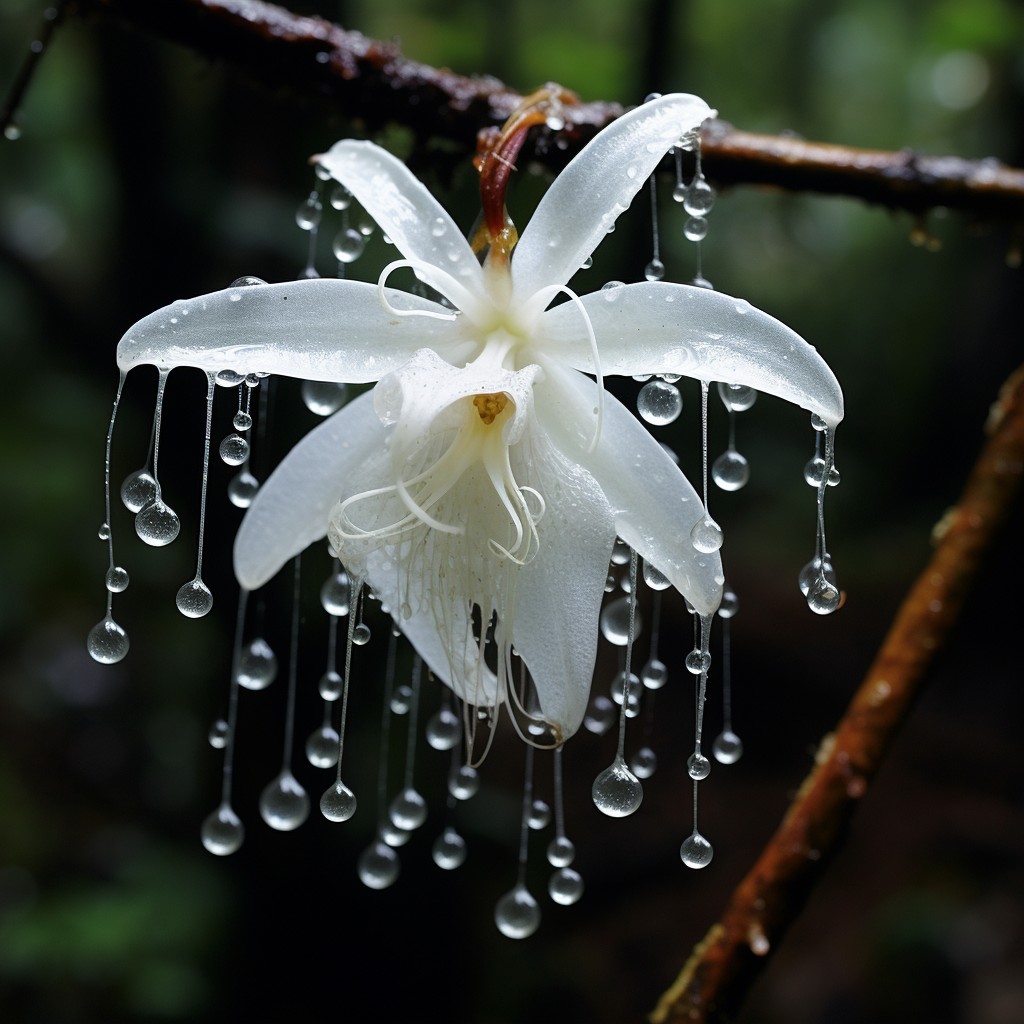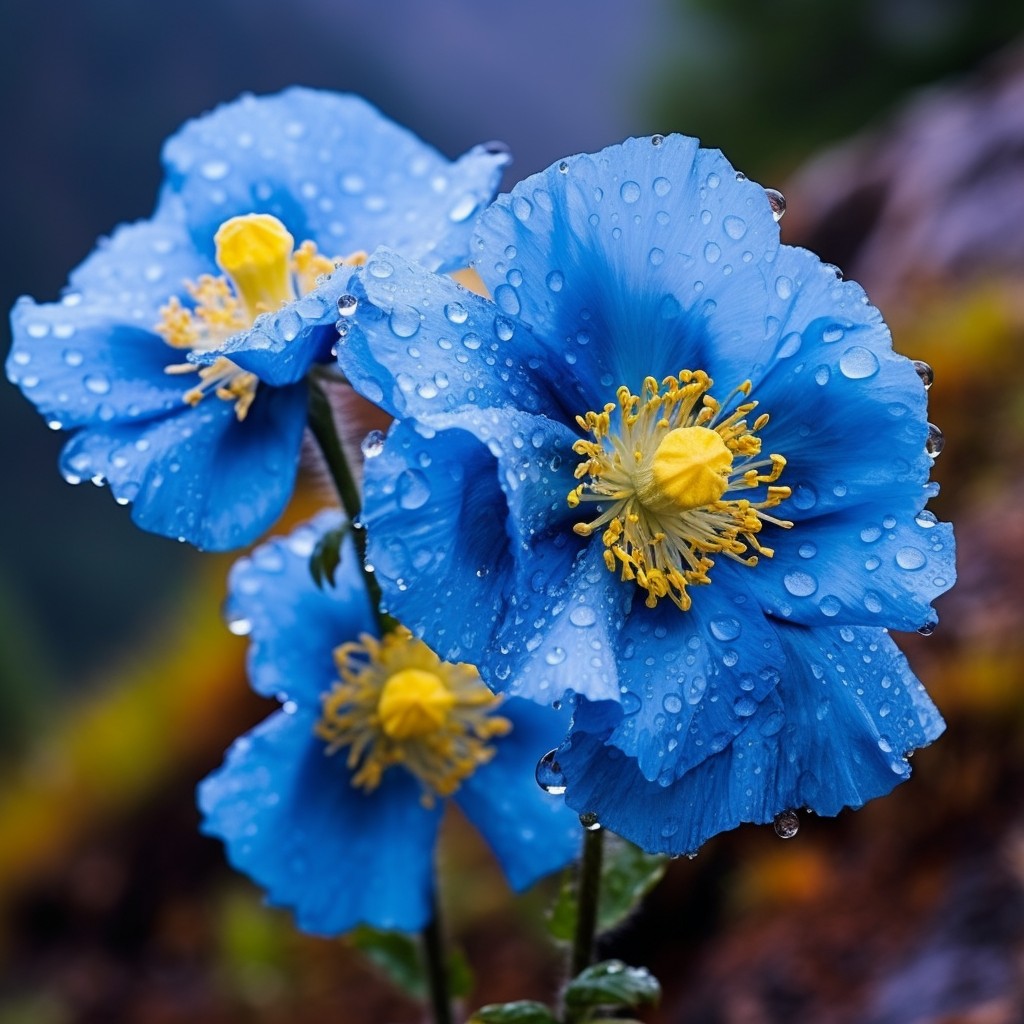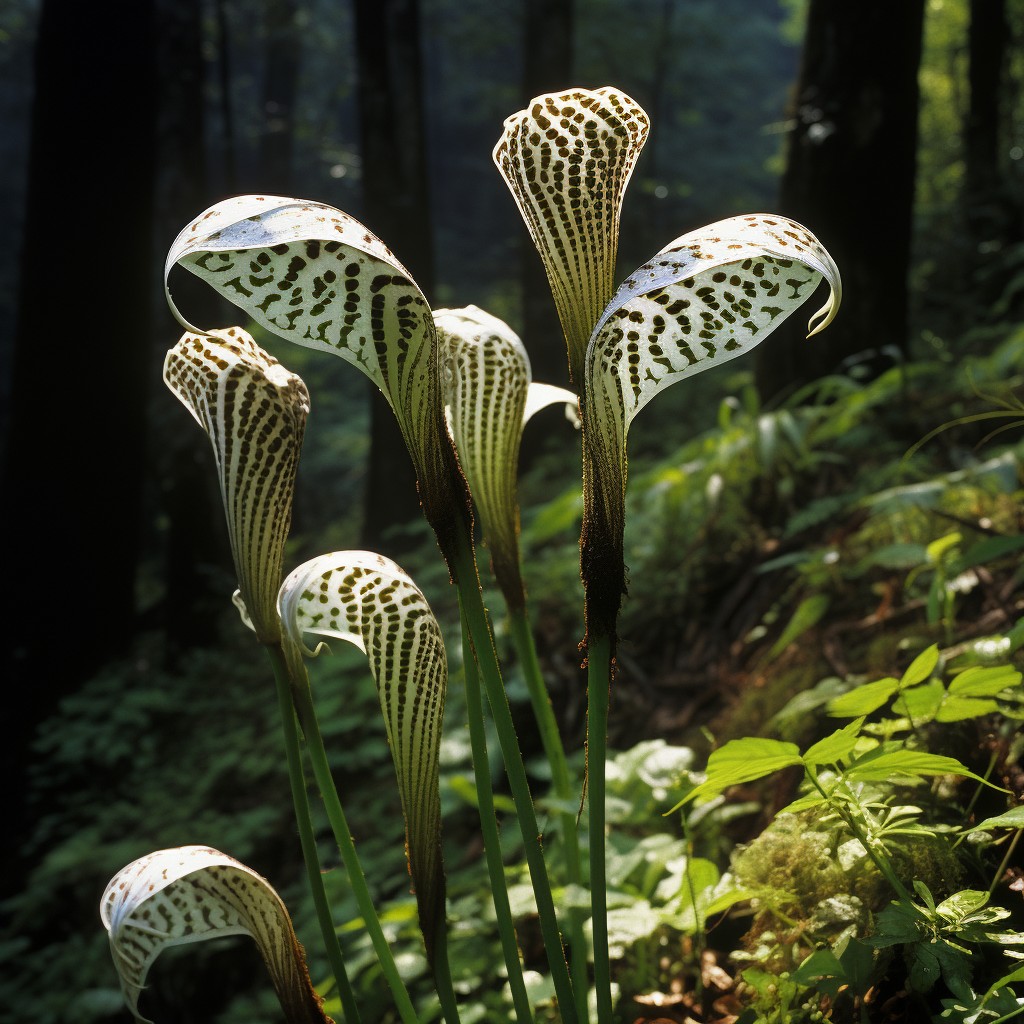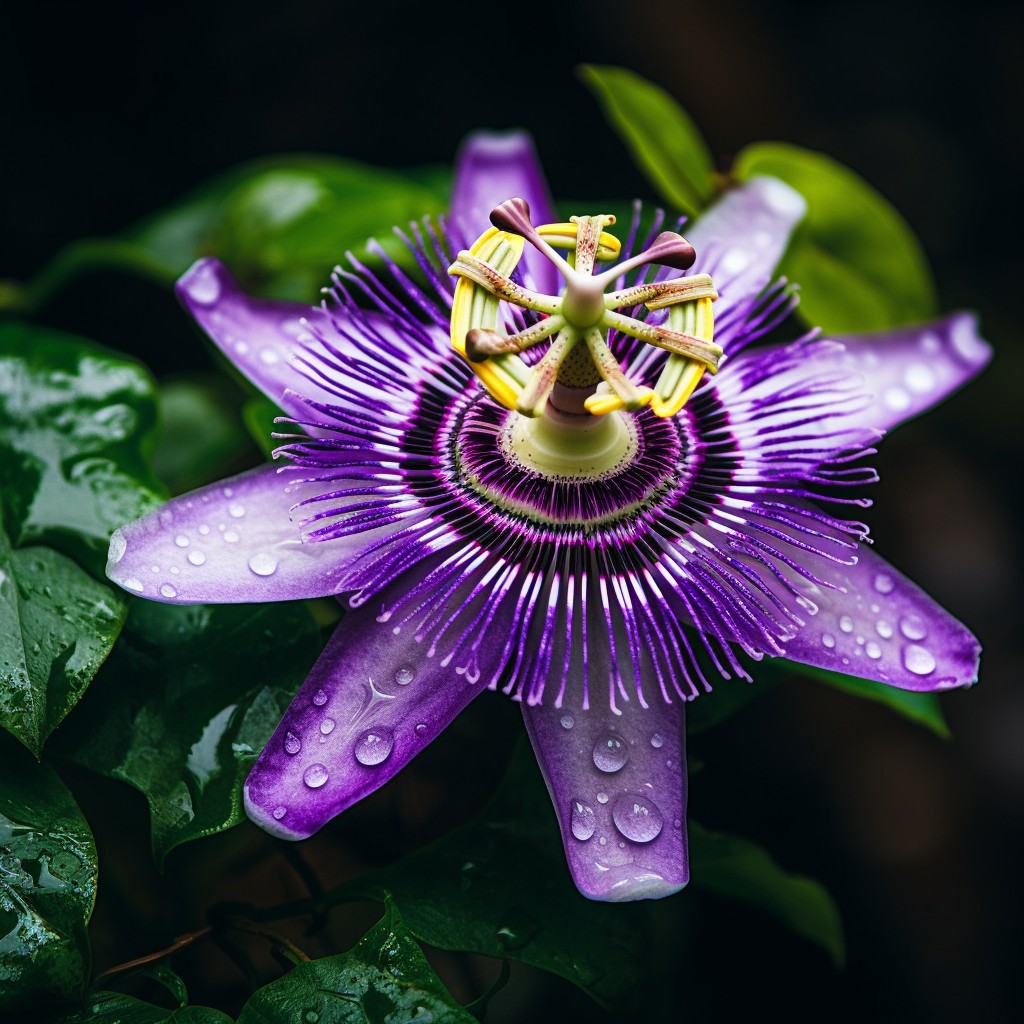- Kitchens
- Design Ideas
- Cities
- Trends
- Guides
- Price Calculators
- Our PortfolioNEW
- More
- Home
- Trends
- Furniture And Decor
- Gardening
- Rare Flowers In India
Most Rare Flowers in India You Have Probably Never Seen
India is a land of diverse landscapes and is home to a plethora of flora and fauna, depicting the country’s botanical treasure trove. There are many prominent flowers in the country, and you will also find many exotic flowers in India, each a testament to the country’s affluent biodiversity.
Table of Content
Beyond their aesthetic appeal, these blooms are interwoven into the cultural fabric, embellishing wedding decors and gracing deities in the garlands.
In this guide, we will take you through some hidden blooms from India's floral kingdom, highlighting their cultural significance and attributes that make these rare Indian flowers botanical wonders while still being emotional threads that connect people to their roots.
Karvi

Botanically called the Strobilanthes Callosus, Karvi is a rare bloom spotted in India's Western Ghats. Karvi occurs once in eight years. When the flower blossoms, the hillsides shine with beautiful violet-blue colours, courtesy of these flowers. People grow Karvi plants to prevent the soil from washing away and to give shade to other plants located in the vicinity.
Neelakurinji

This is also one of the rare flowers found in India along the Western Ghats. Scientifically called the Strobilanthes Kunthiana, Neelakurinji blossoms once in twelve years. They envelop the entire hillside with its bluish-purple blossoms, yielding a spectacular sight. This plant has many medicinal properties and helps cure colds, fever, and respiratory ailments.
Neelakurinji, or Kurinji, grows at a high altitude, primarily between 1300 and 2400 meters. Typically, it grows up to 60 cm, but the plant can also grow up to 180 cm in favourable conditions. These plants belong to the Strobilanthes genus described in the 19th century by Christian Gottfried Daniel Nees von Esenbeck.
On average, there are 250 species in the genus, and 46 of them are found in India. Most of these species depict an unusual flowering pattern, ranging from once-a-year to 16-year blooming cycles.
Ghost Orchid

The rarest flower in India, Dendrophylax Fawcettii or Ghost Orchid, is a gem. Hidden amidst the dense Indian jungles, the Ghost Orchid has a haunting aura and translucent petals. Legends compare it to a shy ghost, and locals whisper tales of its mystical charm, making this plant a coveted treasure.
Native to Florida, Cuba, and the Bahamas, Ghost Orchid is an uncommon perennial epiphyte from the orchid family. Many even call it the white Frog orchid or the Palm Polly.
Himalayan Blue Poppy

Native to Nepal, North East India, Bhutan, and China, the Himalayan Blue Poppy is a rare flower sighted in India's Himalayan region. These flowers grow to 1 meter and yield showy, large, pure blue flowers with a yellow central boss. The flowers show in late spring.
Also called the Meconopsis Aculeata, the Himalayan Blue Poppy is known for its stunning blue petals that find use in the cosmetic industry for their hydrating properties. Beyond this, the flower is also beneficial in treating anxiety, depression, and insomnia.
Cobra Lily

Scientifically called the Arisaema Tortuosum, the Cobra Lily is a rare flower spotted in India's Eastern Himalayas. Native to Oregon, Northern California, and the US, Cobra Lily is the only member from the Darlingtonia genus of the Sarraceniaceae family.
The flowers from this carnivorous plant species have a unique shape that mimics the head of a cobra. Known for its distinct shape, the Cobra Lily also finds use in traditional medicine. It helps treat skin diseases, insect bites, and snake bites.
Lady's Slipper Orchid

These rare, beautiful flowers in India are seen in some parts of the country. Lady's Slipper Orchid is unique because it resembles a tiny slipper. Cypripedioideae is a rare blossom and yields delicate flowers. People appreciate its beauty and try to protect it because of its limited presence.
Purple Passion

Passiflora Incarnata, or Purple Passion, is called by many names like true passion flower, wild apricot, maypop, and wild passion vine. This exotic species has several medicinal uses. In the past, Europeans employed it in herbal medicine. It also helps cure anxiety, hypertension, and insomnia.
The Purple Passion Flowers help treat dysmenorrhoea, neuralgia, burns and haemorrhoids. They have a pleasant fragrance and find use in making jellies, jams, and desserts. In addition, the fruits are also employed as flowering agents in several drinks. Bumblebees, carpenter bees, and hummingbirds are its prevalent pollinators.
Jade Vine

Strongylodon macrobotrys, or Jade Vine, is also called by many names like the turquoise jade vine or emerald vine. It is a unique flower species that looks stunning and attracts nature and flower lovers alike. These exotic flowers of India go into making ornaments. They are also planted in gardens for their showy flowers.
Jade Vine has a glistening turquoise colour, and its flowers have an unusual shape that looks like a pendant when hanging in a bunch. Every pendant has approximately seventy-five flowers, and they reach three meters. You can spot them in Enchanted Gardens and Tukai Exotics in Pune, Maharashtra. In addition, they are also present in Bangalore, Karnataka's Cubbon Park.
Long Flowered Spider Lily

Botanically called the Hymenocallis littoralis, the Long Flowered Spider Lilies are so called because of their tentacle-like long parts, which make them look like a spider. They have giant, white-hued Spider lilies with vanilla aroma, giving them an exotic look.
You can spot Long Flowered Spider Lilies in countries like India, Angola, Philippines, Zambia, Mauritius, Sri Lanka, and Hawaii, but the number is less.
Woodrow's Crinum Lily

Woodrow's Crinum Lily wasn't always called by this name. There is an interesting story behind the discovery and christening of this Lily variety. Botanically called Crinum Woodrowii, Woodrow's Crinum Lily was rediscovered (as legends believed it was an extinct variety) in Vasai, Maharashtra.
At this time, Dinesh Valke captured its beauty on his camera. In Mahabaleshwar, G.M. Woodrow picked some bud samples and sent them to Kew, England, and it was recognised as a new species and christened Crinum Brachynema. However, in no time, they were renamed to their present name.
Woodrow's Crinum Lily are native to Satara District in Mahabaleshwar at Kate's Point. These exotic flower plants in India have white flowers with striped, long petals that find use as ornaments. Their blossoms are attractive and scented. Many use them for commercial purposes, like in perfumes. Several pharma companies also use these lilies.
Kaka Beak

Kaka Beak is botanically called Clianthus but is also known as a lobster claw, parrot's bill, or the parrot's beak. It has red flowers that appear in a bunch. Whenever you spot the Kaka beak in a forest, there is a 100% possibility of spotting Kaka, the parrot.
Kaka Beak flowers find use in gifting and trading. These yield substantial nectar and are a delight for nectar-loving birds like TÅ«Ä«. Butterflies and bees are its pollinators.
Flame Lily

These stunning rare flowers in India have flamy petals, giving them the name Flame Lilies. They are native to Southern and tropical Asia and Africa. In addition, these lilies are also prevalent in Australia and the Pacific. You can spot them in India around the Western Ghats. Flame Lilies are called the Creeping Lily, Gloriosa Lily, Superb Lily, Fire Lily, and Glory Lily.
It is Zimbabwe's national flower and the state flower of Tamil Nadu and Eelam (Sri Lanka's Tamil-dominated region).
Titan Arum
Scientifically called the Amorphophallus titanium, Titan Arum is the largest unbranched blossom in the world. Red petals and a meaty smell are the striking attributes of these rare flower plants in India. The bloomed flowers look like pieces of meat and attract carrion-eating beetles, flesh flies, and other insects. They are giant plants, and the tallest Titan Arum flower is located in Germany's Botanical Gardens Bonn and measures 3.2 meters.
Final Words
The diverse landscape in India hosts a botanical treasure trove with many rare flowers. From the mystical aura of the Ghost Orchid to the Karvi that blooms once in eight years in the Western Ghat, each of these unique flowers has a tale.
While many are famous for their cultural significance, some hold medicinal properties, and the majority are incredibly stunning, making them India's botanical treasures.
Ready for a home transformation?
Let our designers assist you!
Recent Posts
Some top uses of Karvi include:
- Giving shade to other plants
- Preventing soil erosion
- Making cups and plates from the leaves
- Natural dyes from the flowers
Kakabeak is called the Parrot’s beak because its red flowers resemble the Kaka’s beak. Kaka is a parrot from New Zealand.
Titan Arum is called the Corpse flowers because of their foul smell, like rotten meat. It attracts the insects which feed on rotten meat and dead animals.
A diamond broach in the shape of Flame Lily, Zimbabwe’s national flower, was gifted to Queen Elizabeth II in 1947 during her visit to the country. She was then the crown princess.
Neelakurinji blooms once in twelve years and envelops the hillside with purple and bluish flowers.
Related Category
- Door Design
- Exterior Design
- Indoor Plants
- Outdoors































